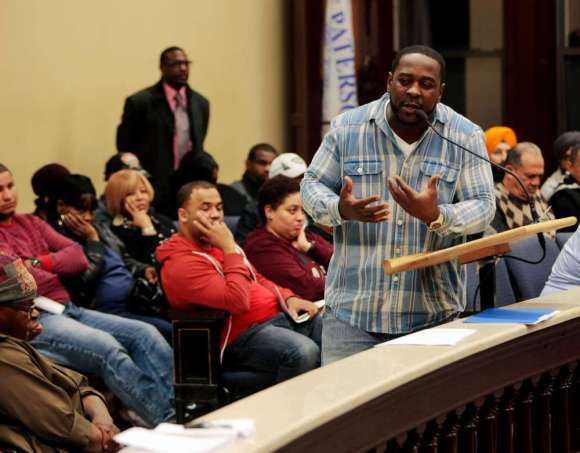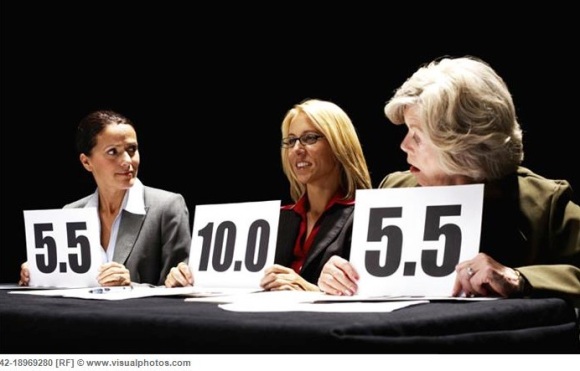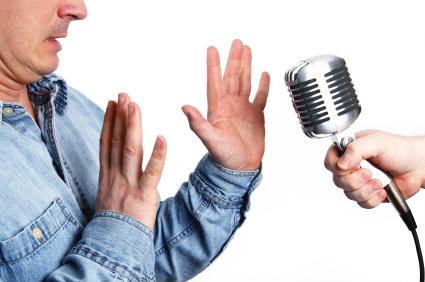Sweaty palms, dry throat, butterflies in the stomach . . . you know the feeling. These are the symptoms that come on just before you are about to speak in public. You’ve spent hours preparing and organizing your message, and know your topic inside and out, but you still can’t shake the feeling of speech anxiety creeping on. Chances are most of us have battled with a case of speech anxiety at some point in our lives. According to some studies, public speaking is the number one fear among American adults. The fear of death comes in second.
So why are we so afraid of public speaking? How can we tame this practically universal fear?
Michael T. Motley, Ph.D., a Professor Emeritus at the University of California, Davis, has studied this topic and written several books and articles on it. Motley believes our fear comes from our mistaken belief that public speaking is a performance. When we start to associate the pressure to speak with the pressure to perform we add a whole new level of anxiety. Performing in a dance recital, a concert, or even competing in a talent contest is typically evaluated and scored in some way. Speaking in front of others is usually not, yet we tend to put performing and speaking in the same category.
As it turns out, however, speaking in public is much more like speaking in normal conversation, says Motley, and recognizing this can help to reduce the anxiety.
As we continue our look at public speaking this month, we wanted to learn more about this number one fear and what causes it. We spoke with Motley on why people are so afraid of public speaking, how we can manage and eventually overcome speech anxiety, and what to remember if that moment of panic strikes during a speech. We welcome his insights.
– – –
The number one fear of American adults is the fear of public speaking. The fear of death comes in second. Why are we so afraid of public speaking?
The most common answer to this question is that the fear comes from having had a traumatic public speaking experience in the past, but I really doubt that this is the case very often. A more accurate answer for most people, I think, is that they mistakenly think of a speech as a performance instead of as a communicative effort to get certain points across to listeners. Accordingly, they mistakenly believe that the situation calls for formal or “proper” behaviors — special gestures, special eye contact, special vocabulary, and so forth — and mistakenly believe that the objective is to be evaluated positively by a scrutinizing audience. These two conditions — thinking that one is being evaluated “under the microscope” and believing that the situation requires unfamiliar behaviors — happen to set off anxiety in all kinds of social situations, such as job interviews, meeting your boyfriend’s or girlfriend’s parents for the first time, and so forth. The good news is that the typical speech audience in fact is not focused on evaluation (after all, is that your main objective when listening to a speech?); and that the gestures, expressions, inflections, and other behaviors needed for a speech are the familiar behaviors of everyday conversation.
Are adults more prone to the fear of public speaking? Do youths also experience this fear?
In our culture, people of all post-adolescent ages experience public speaking anxiety.
Your book, Overcoming Your Fear of Public Speaking: A Proven Method, recommends viewing speeches as a conversation rather than a performance. How does adopting a communication orientation toward public speaking, instead of a performance orientation, reduce anxiety?
Let’s start with the ways that performances and conversations differ. Think in terms of true performances like music recitals or Olympic gymnastic routines, or in terms of a speech being approached as a performance. Notice that in each case the performance is almost bound to cause more anxiety.
As for the order of the behaviors, they are scripted in performances versus spontaneous in conversation. As for the behaviors themselves, they need to be specialized and artificial in performances, but need to be natural and familiar in conversation. As for the objective, in a performance it is to impress people and score points, while in a conversation it is simply to get an idea across. As for error tolerance, in a performance, mistakes are noticed and cause real or figurative points to be deducted, while in a conversation, glitches such as hesitations, false starts, slips of the tongue, and so forth, are hardly even noticed. And unless they are excessive to the point of distraction, they are not held against the speaker (indeed, they make us “human”). As for what the audience prefers in speeches, all other things being equal, they usually don’t like a speaker who seems to be up there to show off skills and get the practiced routine over with, and they usually do like a speaker who is genuinely trying to communicate a message he or she believes is important.
To put it another way, true performances put considerable pressure on the performer and failure is a real possibility. But conversing is something we have proved to ourselves that we already know how to do successfully, because we do it successfully every day. Add to this the fact that a conversational style — natural gestures, natural facial expression, natural vocal inflection, and so forth — actually improves the speech as well, and it becomes easy to see how abandoning a performance orientation should reduce anxiety.

McKayla Maroney of the United States women’s gymnastics team after a vault competition during the 2012 Summer Olympics in London.
(Credit: Inquisitr Ltd.)
What motivated you to study and write about public speaking and speech anxiety?
I was a contest orator in high school. Contest oratory is definitely performance oriented, and I had high stage fright. In college I had an instructor who emphasized a communicative, non-performance, approach to public speaking, and as I adopted it, the anxiety went away. Then, at about the same time, another professor invited me to be his research assistant. Part of his research involved using heart rate to measure public speaking anxiety. I got to work on studies about how anxiety vacillates before, during, and after a speech. I think the combination of my own experience with the two extremes of stage fright, along with assisting on my professor’s work, made it sort of natural for public speaking anxiety to be one of my first specializations when I began doing my own research.
Different people experience different degrees of speech anxiety. For some it is the feeling of butterflies in their stomach before speaking, for others the fear is paralyzing. What causes this range of symptoms and why does the interpretation of these symptoms matter?
I think the only way to have zero anxiety for a speech is to not care at all about the success of the effort. Obviously (I hope), to not care at all would not be a good thing. So even the experienced communication-oriented speaker is likely to have a twinge of anxiety, because a lot of planning and effort has already gone into the speech, presumably, the opportunity to communicate the message is finally here, and he/she wants the communication effort to be successful. But extreme anxiety — “paralyzing fear,” as you call it — is almost certain to be the result of a performance orientation toward the speech. As for the interpretation of the symptoms, that’s not the trick. The interpretation of the speech situation and the speech objectives is what matters. For most people, interpreting the speech as a performance is going to jack up the anxiety and the more troubling symptoms, while interpreting it as a communication task will reduce the anxiety and leave only the milder symptoms.
People don’t naturally interpret the physical symptoms of speech anxiety in a positive way. How can we work to change the negative interpretation of these symptoms into a positive one?
Since there are ways to reduce the anxiety, the objective, I think, should be to change the intensity of the symptoms rather than to change our interpretation of them. Even when one reduces the intensity of the symptoms, however, it is helpful to have realistic targets. You’re simply not likely to completely eliminate the tiny bit of anxiety that virtually all speakers have right before getting up to give the speech, for example. Even low anxiety speakers have minor symptoms and it can be helpful for the high anxiety speaker to make these the goal.
Many people regard the fear of public speaking and stage fright as the same thing. Is there a difference and if so what is it?
The anxiety felt by most musicians in a piano recital, dancers in a dance recital, participants in a contest debate, and public speakers may all be called “stage fright.” They are examples of what is also referred to as “performance anxiety.” The primary difference is that the assumptions of a performance orientation — being there to have the performance scrutinized, showing off special skills, being penalized for mistakes, receiving a final performance score, and so forth — may be true for many piano recitals, figure skating competitions, contest debates, and so forth. But the assumptions simply are not true for most speech situations. And as soon as we realize that a speech is not like these other performances, the causes of “performance anxiety,” “stage fright,” “public speaking anxiety” –whatever you want to call it — subside considerably.
Speech anxiety can strike at almost any time. Probably the most mortifying is during an important presentation or speech. What are some important things to remember in that moment that can help someone struck with speech anxiety get back on track and make it through to the end?
Two points here. First, the near total meltdown you seem to be alluding to tends to happen only when one has the speech content down too pat — too word-for-word planned out. Most every public speaking instructor would agree with me that one should never, never, never try to memorize a speech, or write it out word for word to read, or use as a prompt.
Any time we think there is only one right way or best way to say it, three bad things happen: The anxiety goes way up (because we’re afraid of forgetting or losing our place), we sound phony and artificial (because we’re missing the natural rhythm that comes with conversational talk), and, as you suggested, a minor glitch can throw us completely off kilter.
The idea is that we should plan very carefully what points we’re going to make, the order in which we’re going to present them, the examples we’re going to use, and so forth. But we need to be spontaneous — as we are in conversation — with respect to the exact words we’re going to use. If we take that approach, then an outline with brief notes is all we need to get through the speech or to get back on track if something throws us off.
The second important point here is to realize that all of the objects of the “fear” are irrational. My book spends about 15 pages on this so I’ll have to be give a very abbreviated version here, but in a nutshell, it simply isn’t true that, “The audience will ridicule me if I make a mistake,” “I might make a fool out of myself,” “This needs to be perfect,” and so forth. It can be very helpful to have a more rationale and realistic understanding of these and the other dozen or so common answers to, “What am I afraid of?” about giving a speech.
How can the average person use public speaking in his or her daily life?
Let’s begin by noticing that there is hardly any difference between a speech and an ordinary conversation. Indeed, there are only three differences. And if we take a communication orientation, all three of them actually make the speech preferable in some ways: First, with a speech we get more time to plan what we’re going to say — more time to think before we speak. Second, we get to share our information without being interrupted or having to digress from our message. Third, we get the efficiency of sharing our message with several people at once. Assuming that we have something important to say, the more people who can hear it at one time, the better. So, getting back to the question of how we can use public speaking in our everyday lives, we can use it virtually any time we have something important or valuable (to others) to say, and have time to plan an effective way to present it, and have a group of people who might want or need to hear it. Depending on the message, that group might be colleagues, clients, the PTA, the City Council, a group of wedding guests, and on and on.

A Peterson, New Jersey resident speaks before the City Council during a discussion on limiting the hours of some late-night businesses.
(Credit: George McNish/ North Jersey Media Group)
What are some resources and practices you recommend for people looking to manage their speech anxiety and improve their public speaking?
There have been about a dozen or so research studies in the past few years to test various kinds of public speaking anxiety therapies against one another. Over and over, the most effective approach is to replace the performance orientation with a communication orientation. I’ve only scratched the surface in this discussion, of course. The complete therapy takes about 1 1/2 hours face to face, or about 150 pages in print. I know several university instructors who can help with this approach. But I stopped doing therapy myself a few years ago when I realized that I was saying the same thing to practically all clients and decided to put it into a book. In most of the research studies that compare therapies, the communication-orientation therapy is administered simply by having the research participants read the first four chapters of my book — Overcoming Your Fear of Public Speaking: A Proven Method. By the way, the “A Proven Method” part of the title comes from the fact that all of these studies have shown that people who read the first four chapters have significantly more public speaking stage fright reduction than those who received other therapies. There are other solutions, of course, but this is the easiest and works well for most high- and very high-anxiety speakers.
– – –
So next time it’s your turn to speak relax and remember its just a well thought-out conversation between you and the audience.
Click here to purchase a copy of Overcoming Your Fear of Public Speaking: A Proven Method.
Liz Faris, Associate
Collaborative Services, Inc.






Recent Comments